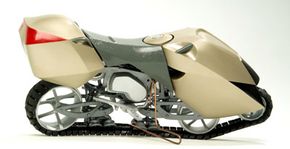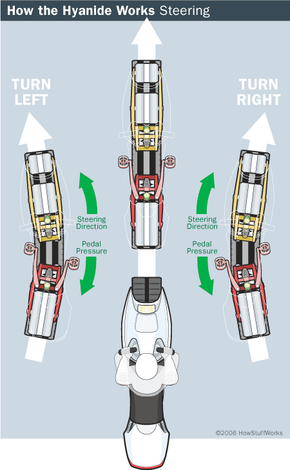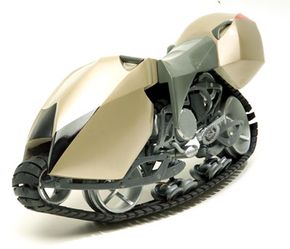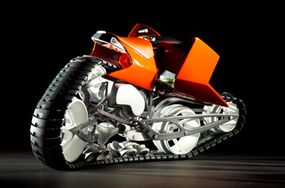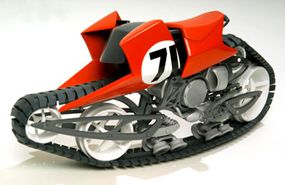Although they're all personal methods of transportation, a motorcycle, an ATV and a snowmobile have very distinct functions. If you want to head out on the highway, you'll probably hop on your motorcycle. Motorcycles aren't meant to go off-road, however, so if you want to navigate dirt trails, an ATV or a dirt bike is a good choice. And as its name implies, a snowmobile is perfectly suited to snowy, icy roads and trails. Many people own at least one of these vehicles, but most don't have one of each. Wouldn't it be great if one vehicle could handle all of these separate road conditions without even having to change tires? Enter the Hyanide, a concept vehicle designed to do just that.
The Hyanide's designers see it as a vehicle that can tackle the duties of these other vehicles. It looks a lot like a motorcycle, until you notice that instead of sitting on two wheels, it has a long tank-like tread that runs the entire length of the vehicle. Some people call it a "tank motorcycle."
Advertisement
Because only a small part of the tread needs to be touching solid ground to keep the Hyanide moving, it would be almost impossible to get stuck while riding it. The Hyanide will also be fast and agile, in part because the treads are much lighter and more flexible than the treads on a tank or bulldozer.
While the Hyanide is perfect for recreational use, it could also fill a number of roles for people who need to get around large wilderness areas without cleared trails. It would be ideal for park rangers and researchers heading into ecologically-sensitive places, because the long tread distributes the Hyanide's weight across a large area. It would have less impact on the terrain than a snowmobile or an ATV.
Advertisement
